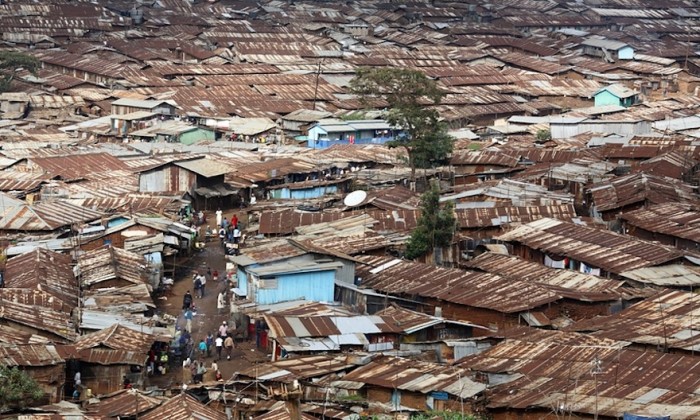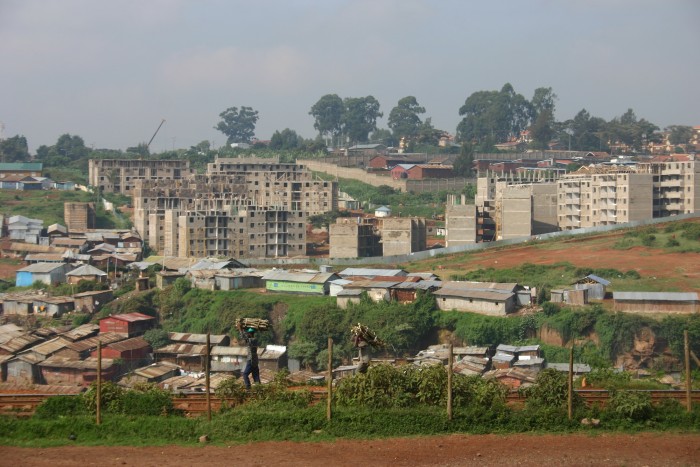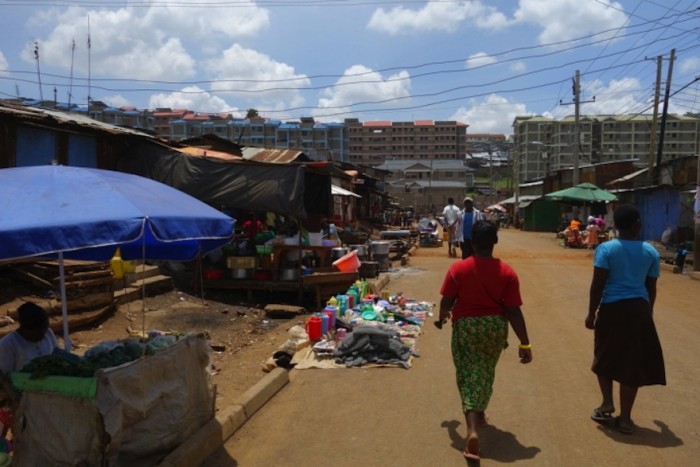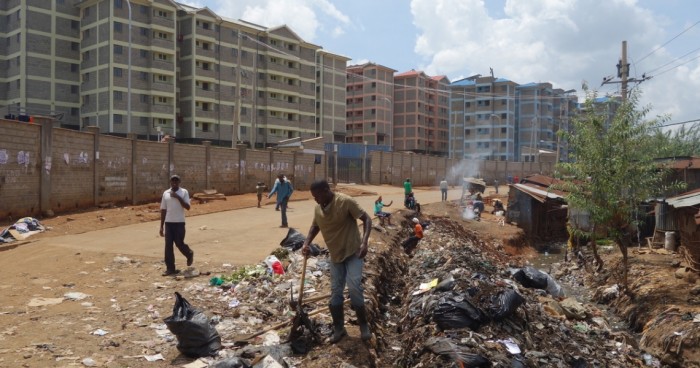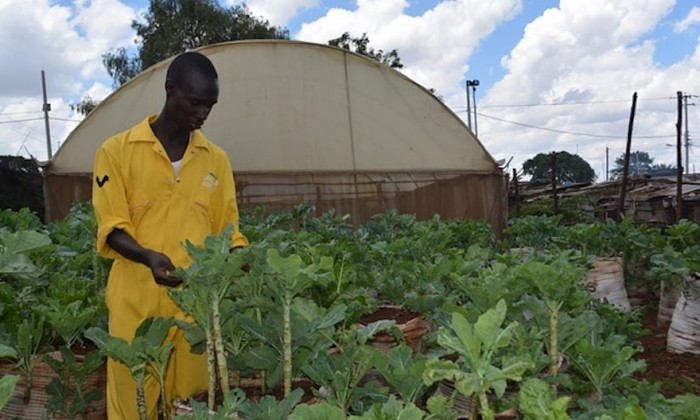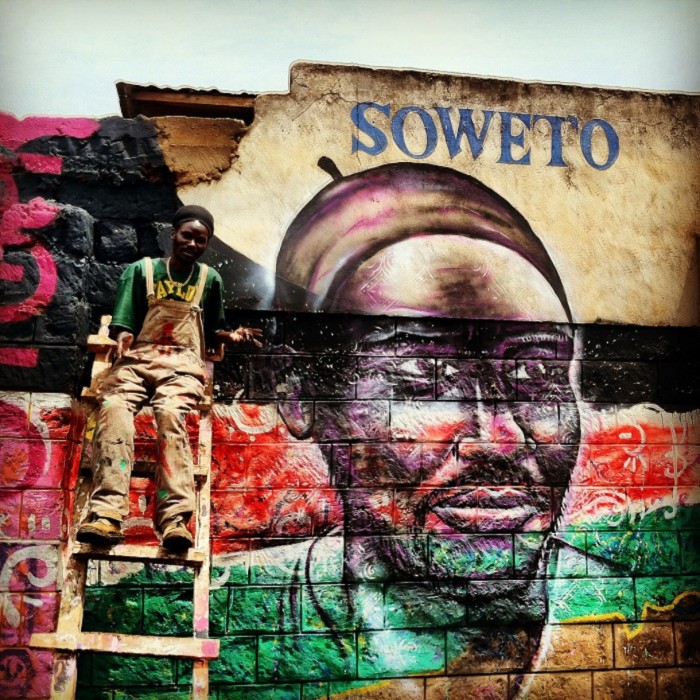Located just five kilometres from Kenya’s vibrant capital Nairobi, Kibera is the world's third-largest slum. Roughly one million residents live in Kibera (forming one-fifth of Nairobi’s population), where overcrowded shacks, poor sanitation, and poverty is widespread and municipal officials have traditionally ignored the community.
This is changing in the corner of Kibera known as Soweto East, where a cluster of new six-storey apartment buildings with balconies, indoor plumbing and electricity are being erected. This is a part of a growing trend in Africa, driven by the United Nations agency known as UN-Habitat.
In 2003, the Kenyan government and UN-Habitat signed a memorandum of understanding that led to the Kenya Slum Upgrading Programme, or KENSUP. KENSUP aims to improve the infrastructure and housing of 5.3 million slum dwellers in Kenya and in other areas of sub-Saharan Africa by 2020.
The agency, in collaboration with the Kenyan government, has been working to upgrade the human settlements in Kibera over the more typical treatment of neglect, evictions and home demolitions.
The first step in improving housing in Kibera was to replace the existing shacks with modern high-rise buildings and to give the residents a chance to own an apartment in the new development. The flagship of KENSUP in Kibera is a number of concrete buildings called “The Promised Land” by local residents. The apartments inside are heavily subsidised and provide the formalised services that slums lack – like water, sanitation and electricity.
Before any slum shacks were demolished, residents were issued ID cards for a fee of 20 Kenyan shillings (about $0.20). These gave the residents a right to live in transitional housing set up by KENSUP, and eventually in the new towers that would be built where their old homes once stood.
The completed units will be sold to Kibera residents at what UN-Habitat deems to be a below market rate of between 400 000 to 900 000 Kenyan shillings ($5000 to $11,250).
KENSUP is setting the tone for conversation and policy around urban renewal and slum development across the globe, but it is encountering setbacks.
Even though the fees are relatively low, Kibera site residents claim that the government didn’t involve them in setting up the rent rates and the cost remains unaffordable to some. This poses a problem to Kibera residents who know that KENSUP is not a UN handout: KENSUP receives allocations from the national budget.
Many Kibera residents who were given accommodation in the transitional housing through the programme also saw a business opportunity and rented their flats to wealthier tenants at four and five times the subsidised rate. They then moved back to the slum with extra money in their pocket.
The first families are expected to move into Soweto East’s 822 high-rise apartment units, which range from one to three bedroom units, at the end of 2015. Another group will then move into the transitional housing area and the process will repeat until all of Kibera’s residents are housed.
The UN, once an equal partner on the Kibera project, has now successfully handed the project to the Kenyan government. However, while the apartments are a major agency and governmental victory, the people living in Kibera have long resisted the “slum narrative”. They are challenging perceptions by responding to the conditions of slum living with mind-blowing innovation.
The farmers of Kibera are countering the challenge of food insecurity with an unusual form of urban farming: sack gardens. These innovative urban farmers use a series of sacks that are filled with manure, soil and small stones to grow kale, spinach, onions, tomatoes, vegetables and arrowroot.
The youth in Kibera have used graffiti as a response to the threat of political violence in the slum. In 2007 Kibera was a major site for political violence following the elections. In 2013 a youth art project called “Kibera Walls for Peace” pre-emptively spray-painted 10 carriages of a commuter trains and painted a series of public murals in high-profile locations around Kibera, all aimed at easing tensions between different ethnic and political groups and encouraging peace.
Kibera is set to receive structure designed by SelgasCano, the Spanish architectural firm that created the wildly popular Serpentine Pavilion. The firm has erected a pop-up pavilion as part of the Louisiana Museum of Modern Art’s exhibition “Africa: Architecture, Culture, Identity”. The structure, titled Louisiana Hamlet is made from common materials – colourful scaffolding components and hard plastic sheets – and it serves as a viewing space for three short films connected to the theme “building futures”. At the end of the pavilion, the building will be shipped to Kibera, where it will serve as a school and indeed help to build futures.
As some of the residents of Kibera begin their move into The Promised Land and others await theirs, Ghana is following suite and finalising a framework for a national slum-upgrading program with a priority focus on its capital Accra. The government of Niger has also established a $3 million budget line for informal upgrading.

